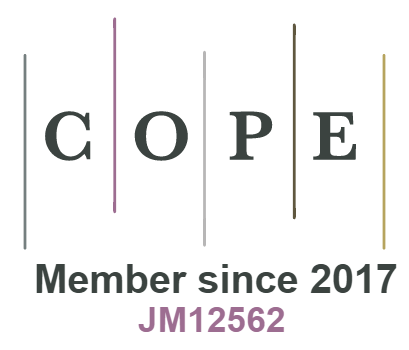Unlocking PHP's Potential: An All-Inclusive Approach to Server-Side Scripting
DOI:
https://doi.org/10.18034/ei.v6i2.683Keywords:
PHP (Hypertext Preprocessor), Server-Side Scripting, Web Development, Control Structures, Web Applications, Database Interaction, Performance OptimizationAbstract
PHP powers many dynamic and interactive websites in the ever-growing world of web development. PHP was initially called "Personal Home Page," but it has since become the Hypertext Preprocessor we know. This detailed article examines PHP (Hypertext Preprocessor), a dynamic server-side scripting language that has shaped the digital landscape since 1994. PHP has grown from a tool for managing a personal website to a flexible language powering much of the web. A detailed look into PHP object-oriented programming reveals its organizational benefits, while a separate section covers session management, form handling, and database interfaces in web development. PHP application security comes first, addressing common vulnerabilities and recommending best practices. The study covers PHP frameworks, development tools, scalability, and performance optimization. Finally, it considers PHP's role in Web 3.0 and its future in upcoming technologies. This PHP exploration seeks to help developers master and innovate in the ever-changing web development landscape.
Downloads
References
Artzi, S., Dolby, J., Tip, F., Pistoia, M. (2012). Fault Localization for Dynamic Web Applications. IEEE Transactions on Software Engineering, 38(2), 314-335. https://doi.org/10.1109/TSE.2011.76 DOI: https://doi.org/10.1109/TSE.2011.76
Baddam, P. R. (2017). Pushing the Boundaries: Advanced Game Development in Unity. International Journal of Reciprocal Symmetry and Theoretical Physics, 4, 29-37. https://upright.pub/index.php/ijrstp/article/view/109
Baddam, P. R., & Kaluvakuri, S. (2016). The Power and Legacy of C Programming: A Deep Dive into the Language. Technology & Management Review, 1, 1-13. https://upright.pub/index.php/tmr/article/view/107
Ballamudi, V. K. R. (2016). Utilization of Machine Learning in a Responsible Manner in the Healthcare Sector. Malaysian Journal of Medical and Biological Research, 3(2), 117-122. https://mjmbr.my/index.php/mjmbr/article/view/677
Ballamudi, V. K. R., & Desamsetti, H. (2017). Security and Privacy in Cloud Computing: Challenges and Opportunities. American Journal of Trade and Policy, 4(3), 129–136. https://doi.org/10.18034/ajtp.v4i3.667 DOI: https://doi.org/10.18034/ajtp.v4i3.667
Dekkati, S., & Thaduri, U. R. (2017). Innovative Method for the Prediction of Software Defects Based on Class Imbalance Datasets. Technology & Management Review, 2, 1–5. https://upright.pub/index.php/tmr/article/view/78
Dekkati, S., Thaduri, U. R., & Lal, K. (2016). Business Value of Digitization: Curse or Blessing?. Global Disclosure of Economics and Business, 5(2), 133-138. https://doi.org/10.18034/gdeb.v5i2.702 DOI: https://doi.org/10.18034/gdeb.v5i2.702
Desamsetti, H. (2016a). A Fused Homomorphic Encryption Technique to Increase Secure Data Storage in Cloud Based Systems. The International Journal of Science & Technoledge, 4(10), 151-155.
Desamsetti, H. (2016b). Issues with the Cloud Computing Technology. International Research Journal of Engineering and Technology (IRJET), 3(5), 321-323.
Desamsetti, H., & Mandapuram, M. (2017). A Review of Meta-Model Designed for the Model-Based Testing Technique. Engineering International, 5(2), 107–110. https://doi.org/10.18034/ei.v5i2.661 DOI: https://doi.org/10.18034/ei.v5i2.661
Huynh, M. Q., Ghimire, P. (2015). Learning by Doing: How to Develop a Cross-Platform Web App. Journal of Information Technology Education. Innovations in Practice, 14, 145-169. https://doi.org/10.28945/2252 DOI: https://doi.org/10.28945/2252
Kaluvakuri, S., & Lal, K. (2017). Networking Alchemy: Demystifying the Magic behind Seamless Digital Connectivity. International Journal of Reciprocal Symmetry and Theoretical Physics, 4, 20-28. https://upright.pub/index.php/ijrstp/article/view/105
Kaluvakuri, S., & Vadiyala, V. R. (2016). Harnessing the Potential of CSS: An Exhaustive Reference for Web Styling. Engineering International, 4(2), 95–110. https://doi.org/10.18034/ei.v4i2.682 DOI: https://doi.org/10.18034/ei.v4i2.682
Keighley, L. (2002). Review: Wireless Web Development with PHP and WAP. ITNOW, 44(3), 31-31. https://doi.org/10.1093/combul/44.3.31-b DOI: https://doi.org/10.1093/combul/44.3.31-b
Lal, K. (2015). How Does Cloud Infrastructure Work?. Asia Pacific Journal of Energy and Environment, 2(2), 61-64. https://doi.org/10.18034/apjee.v2i2.697 DOI: https://doi.org/10.18034/apjee.v2i2.697
Lal, K. (2016). Impact of Multi-Cloud Infrastructure on Business Organizations to Use Cloud Platforms to Fulfill Their Cloud Needs. American Journal of Trade and Policy, 3(3), 121–126. https://doi.org/10.18034/ajtp.v3i3.663 DOI: https://doi.org/10.18034/ajtp.v3i3.663
Lal, K., & Ballamudi, V. K. R. (2017). Unlock Data’s Full Potential with Segment: A Cloud Data Integration Approach. Technology &Amp; Management Review, 2, 6–12. https://upright.pub/index.php/tmr/article/view/80
Maddali, K., Roy, I., Sinha, K., Gupta, B., Hexmoor, H., & Kaluvakuri, S. (2018). Efficient Any Source Capacity-Constrained Overlay Multicast in LDE-Based P2P Networks. 2018 IEEE International Conference on Advanced Networks and Telecommunications Systems (ANTS), Indore, India, 1-5. https://doi.org/10.1109/ANTS.2018.8710160 DOI: https://doi.org/10.1109/ANTS.2018.8710160
Pispidikis, I., Dimopoulou, E. (2016). Development of A 3D Webgis System for Retrieving and Visualizing Citygml Data Based on Their Geometric and Semantic Characteristics by Using Free and Open Source Technology. ISPRS Annals of the Photogrammetry, Remote Sensing and Spatial Information Sciences, IV-2/W1, 47-53. https://doi.org/10.5194/isprs-annals-IV-2-W1-47-2016 DOI: https://doi.org/10.5194/isprs-annals-IV-2-W1-47-2016
Prechelt, L. (2011). Plat_Forms: A Web Development Platform Comparison by an Exploratory Experiment Searching for Emergent Platform Properties. IEEE Transactions on Software Engineering, 37(1), 95-108. https://doi.org/10.1109/TSE.2010.22 DOI: https://doi.org/10.1109/TSE.2010.22
Prokhorenko, V., Choo, K. -K. R., Ashman, H. (2016). Intent-Based Extensible Real-Time PHP Supervision Framework. IEEE Transactions on Information Forensics and Security, 11(10), 2215-2226. https://doi.org/10.1109/TIFS.2016.2569063 DOI: https://doi.org/10.1109/TIFS.2016.2569063
Sahu, D. R., Tomar, D. S. (2015). DNS Pharming through PHP Injection: Attack Scenario and Investigation. International Journal of Computer Network and Information Security, 7(4), 21-28. https://doi.org/10.5815/ijcnis.2015.04.03 DOI: https://doi.org/10.5815/ijcnis.2015.04.03
Shu, C., Perkins, J. R. (2001). Optimal PHP Production of Multiple Part-Types on a Failure-Prone Machine with Quadratic Buffer Costs. IEEE Transactions on Automatic Control, 46(4), 541-549. https://doi.org/10.1109/9.917656 DOI: https://doi.org/10.1109/9.917656
Thaduri, U. R. (2017). Business Security Threat Overview Using IT and Business Intelligence. Global Disclosure of Economics and Business, 6(2), 123-132. https://doi.org/10.18034/gdeb.v6i2.703 DOI: https://doi.org/10.18034/gdeb.v6i2.703
Thaduri, U. R., Ballamudi, V. K. R., Dekkati, S., & Mandapuram, M. (2016). Making the Cloud Adoption Decisions: Gaining Advantages from Taking an Integrated Approach. International Journal of Reciprocal Symmetry and Theoretical Physics, 3, 11–16. https://upright.pub/index.php/ijrstp/article/view/77
Tipton, S. J., Choi, Y. B. (2016). Toward Secure Web Application Design: Comparative Analysis of Major Languages and Framework Choices. International Journal of Advanced Computer Science and Applications, 7(2), https://doi.org/10.14569/IJACSA.2016.070206 DOI: https://doi.org/10.14569/IJACSA.2016.070206
Vadiyala, V. R. (2017). Essential Pillars of Software Engineering: A Comprehensive Exploration of Fundamental Concepts. ABC Research Alert, 5(3), 56–66. https://doi.org/10.18034/ra.v5i3.655 DOI: https://doi.org/10.18034/ra.v5i3.655
Vadiyala, V. R., & Baddam, P. R. (2017). Mastering JavaScript’s Full Potential to Become a Web Development Giant. Technology & Management Review, 2, 13-24. https://upright.pub/index.php/tmr/article/view/108
Vadiyala, V. R., Baddam, P. R., & Kaluvakuri, S. (2016). Demystifying Google Cloud: A Comprehensive Review of Cloud Computing Services. Asian Journal of Applied Science and Engineering, 5(1), 207–218. https://doi.org/10.18034/ajase.v5i1.80 DOI: https://doi.org/10.18034/ajase.v5i1.80
Wrench, P., Irwin, B. (2015). A Sandbox-Based Approach to the Deobfuscation and Dissection of PHP-Based Malware. SAIEE Africa Research Journal, 106(2), 46-63. https://doi.org/10.23919/SAIEE.2015.8531886 DOI: https://doi.org/10.23919/SAIEE.2015.8531886
Downloads
Published
Issue
Section
License
Copyright (c) 2018 Chunhua Deming, Parikshith Reddy Baddam, Vishal Reddy Vadiyala

This work is licensed under a Creative Commons Attribution-NonCommercial 4.0 International License.
Engineering International is an Open Access journal. Authors who publish with this journal agree to the following terms:
- Authors retain copyright and grant the journal the right of first publication with the work simultaneously licensed under a CC BY-NC 4.0 International License that allows others to share the work with an acknowledgment of the work's authorship and initial publication in this journal.
- Authors are able to enter into separate, additional contractual arrangements for the non-exclusive distribution of the journal's published version of their work (e.g., post it to an institutional repository or publish it in a book), with an acknowledgment of its initial publication in this journal. We require authors to inform us of any instances of re-publication.









